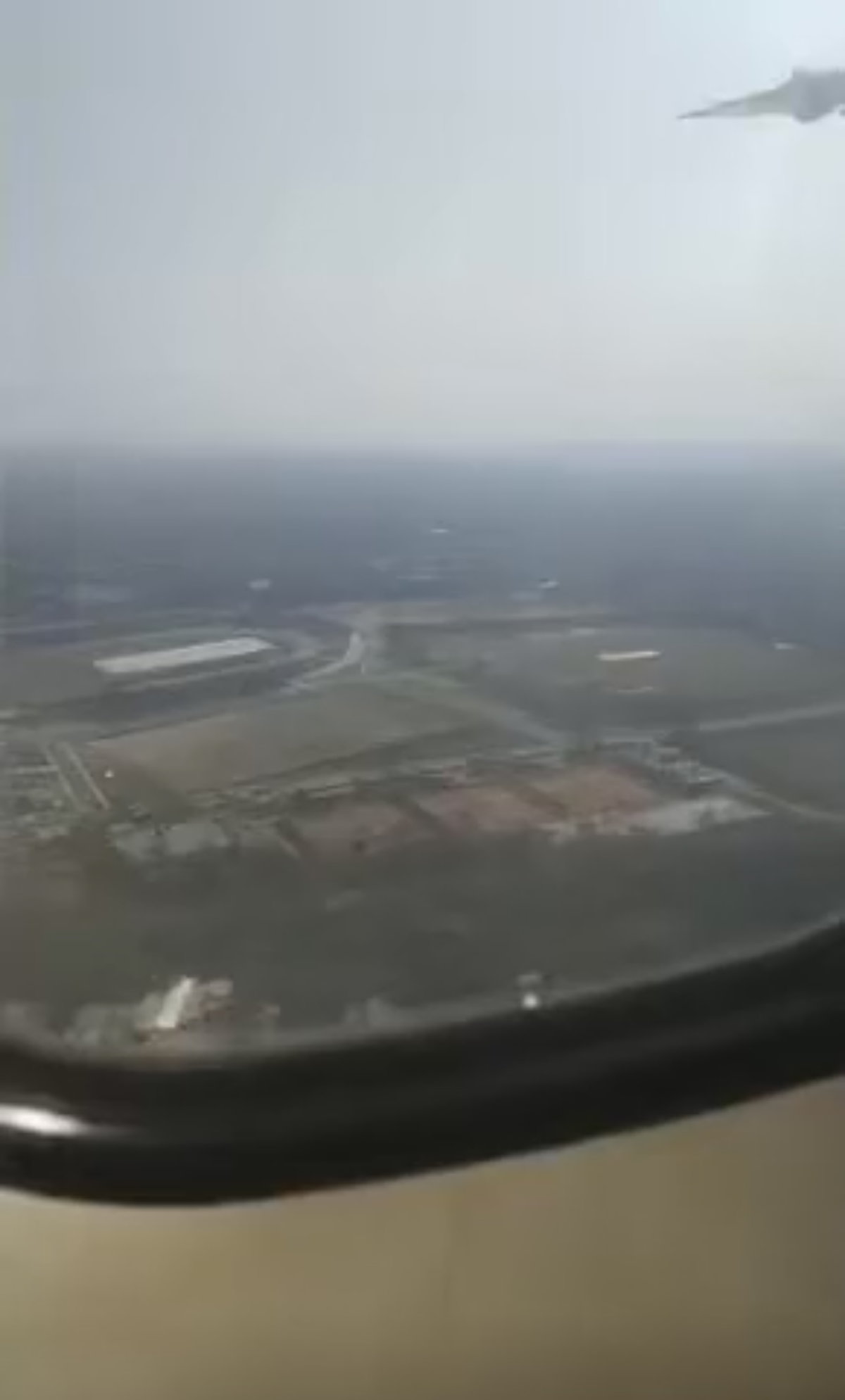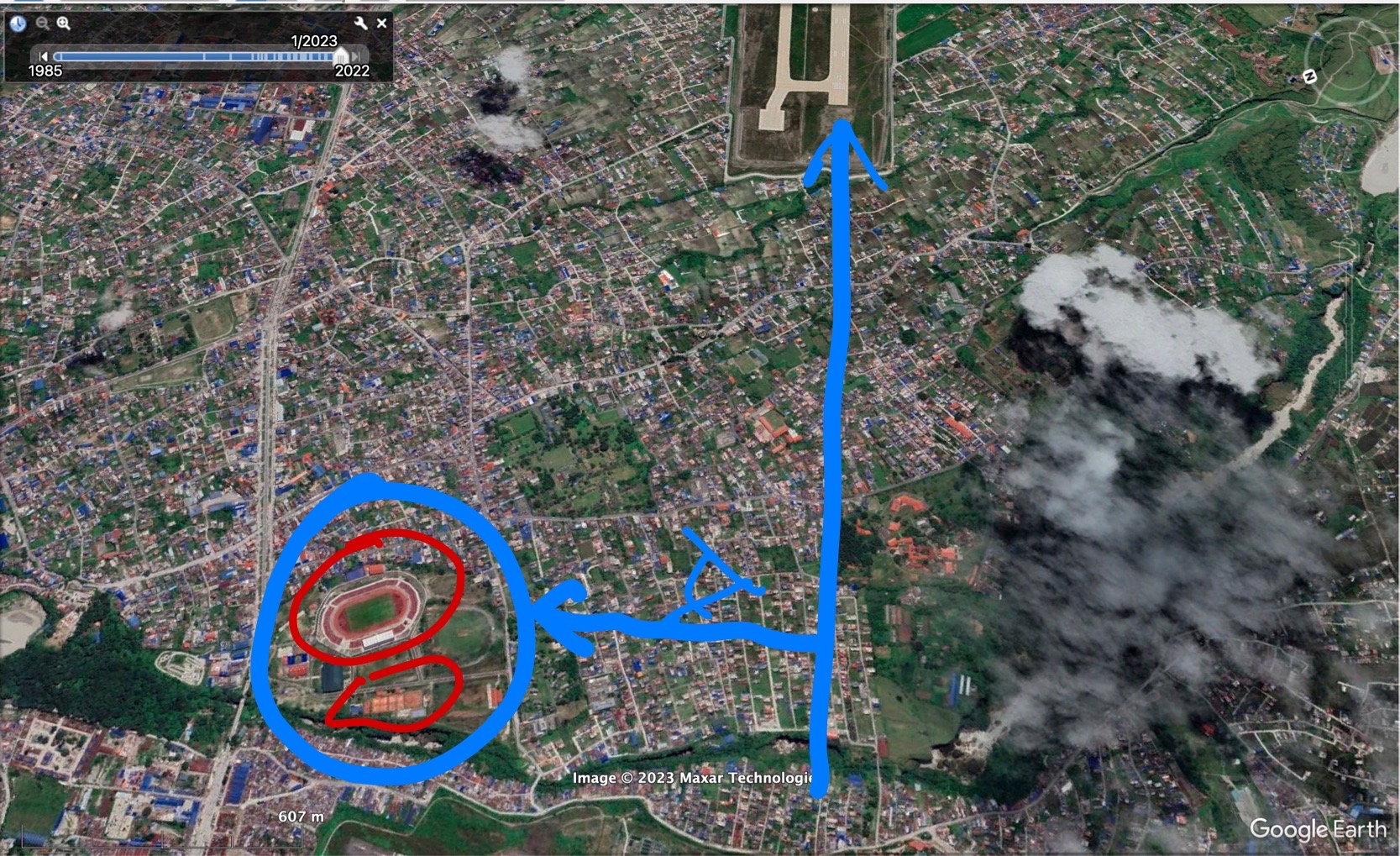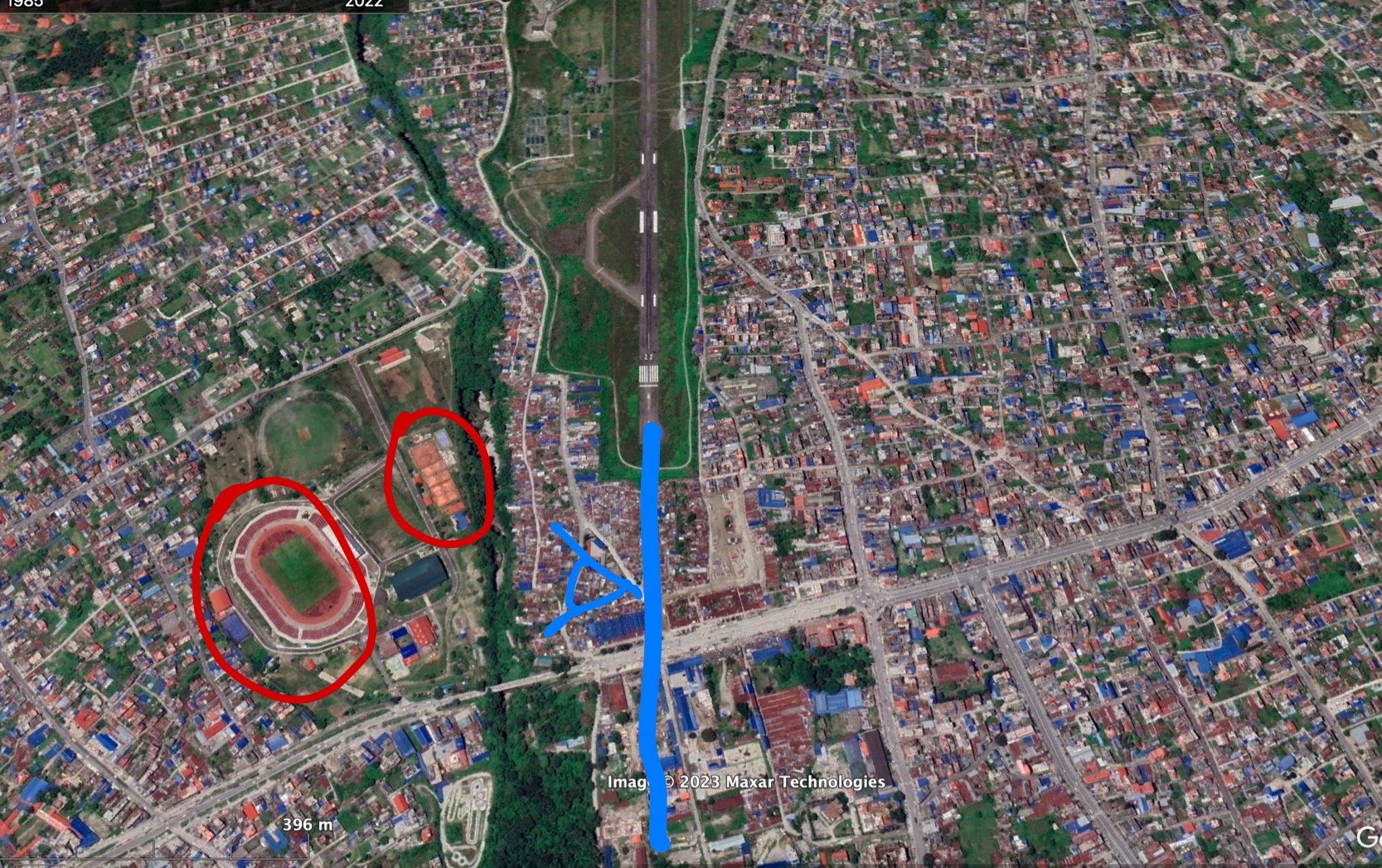Nepal Plane Crash
Join Date: Jun 2007
Location: Wanderlust
Posts: 3,407
Likes: 0
Received 0 Likes
on
0 Posts
Join Date: May 2018
Location: England
Posts: 3
Likes: 0
Received 0 Likes
on
0 Posts
Join Date: Jan 2008
Location: Heathrow
Age: 37
Posts: 66
Likes: 0
Received 0 Likes
on
0 Posts
Its therefore that I highly suspect the video is real. What a sad thing to witness.
The only blessing is that it was extremely quick.
Last edited by RiSq; 15th Jan 2023 at 22:56.
Psychophysiological entity
Stepping frame by frame in the video where the starboard wing tip goes under the roof soffit, just as the tip reaches the roof there is a puff of grey around the rear of the port engine.
I've looked at it a dozen times and I doubt there's enough energy for adiabatic cloud, also the colour is not right. Just can't make out what causes it. Light through the prop? But it seems to exceed the prop radius.
I've looked at it a dozen times and I doubt there's enough energy for adiabatic cloud, also the colour is not right. Just can't make out what causes it. Light through the prop? But it seems to exceed the prop radius.
You can't be serious. You just make a guess and make your guess a fact as to the how, then order everyone else to stop guessing the why?
(From above):
Every stall is due to excessive AOA.
To me stall seems due excessive aoa.
Everybody can see it, its pretty obvious to any pilot.
The nose lifted.
The plane stalled.
The left wing dropped.
It crashed.
Why it did that, I have no idea, and thats what people should stop guessing about.
Join Date: Jan 2013
Location: Earth
Posts: 29
Likes: 0
Received 0 Likes
on
0 Posts
https://www.aviation-safety.net/data...?id=20230115-0
"According to the published Standard Instrument Arrival procedure, an aircraft has to intercept the Initial Approach Fix (IAF), the POK VOR located at the old airport, at a heading of 087° and then turn right for runway 12. Distance from the IAF to the runway threshold is 2,4 km (1.3 nm)."
The old airport is just over a mile away in a straight line from the new airport's runway 12. You have to overfly the old airport to make it to the new runway. Nothing is "wrong" about that...
"According to the published Standard Instrument Arrival procedure, an aircraft has to intercept the Initial Approach Fix (IAF), the POK VOR located at the old airport, at a heading of 087° and then turn right for runway 12. Distance from the IAF to the runway threshold is 2,4 km (1.3 nm)."
The old airport is just over a mile away in a straight line from the new airport's runway 12. You have to overfly the old airport to make it to the new runway. Nothing is "wrong" about that...
This is a horrible accident and IŽd rather not have seen those videos.
Allow an old Turboprop driver some musings. As is obvious, the ATR is a T-tailed turboprop. There are differences to a jet, both system and handling wise.
First of all, let me stick with the previously made assumption that an aerodynamic stall was somehow involved, which is not too far fetched judging from the video shown.
On an aicrraft with this configuration, there ought to be a stick shaker and a stick pusher installed that fire in that order with an approaching stall but way before the flow separates. I would be very interested to hear whether those were in working condition. Both ought to rattle the crew a good moment before the actual stall occurs - in the video, there seems to be no fighting those systems showing as happened to the Dash 8 in Buffalo. But neither do I observe any movement at all that IŽd link to the actions of a stick pusher, which strikes me as odd.
The proper reaction on the Dash (I am standing by to be corrected by an ATR rated colleague here) is as in most aircraft: put the nose down, roll the wings level. The turboprop engines bring an addition to this: the power levers (and, system dependent, the condition levers) are to be firewalled. Those are MUCH more responsive than a jet engine, high or low bypass, and, by virtue of the prop in front of the wing, will add substantial energy to the airflow within shortest time. Had this happened in the case being discussed here, it would most likely been audible on the videos that showed up here.
I am not going to guess on causes here. But if there was an actual flow separation involved, this would not be the root cause but the final blow. The first slices of Swiss Cheese must have been passed much earlier.
Allow an old Turboprop driver some musings. As is obvious, the ATR is a T-tailed turboprop. There are differences to a jet, both system and handling wise.
First of all, let me stick with the previously made assumption that an aerodynamic stall was somehow involved, which is not too far fetched judging from the video shown.
On an aicrraft with this configuration, there ought to be a stick shaker and a stick pusher installed that fire in that order with an approaching stall but way before the flow separates. I would be very interested to hear whether those were in working condition. Both ought to rattle the crew a good moment before the actual stall occurs - in the video, there seems to be no fighting those systems showing as happened to the Dash 8 in Buffalo. But neither do I observe any movement at all that IŽd link to the actions of a stick pusher, which strikes me as odd.
The proper reaction on the Dash (I am standing by to be corrected by an ATR rated colleague here) is as in most aircraft: put the nose down, roll the wings level. The turboprop engines bring an addition to this: the power levers (and, system dependent, the condition levers) are to be firewalled. Those are MUCH more responsive than a jet engine, high or low bypass, and, by virtue of the prop in front of the wing, will add substantial energy to the airflow within shortest time. Had this happened in the case being discussed here, it would most likely been audible on the videos that showed up here.
I am not going to guess on causes here. But if there was an actual flow separation involved, this would not be the root cause but the final blow. The first slices of Swiss Cheese must have been passed much earlier.
Join Date: Jun 2010
Location: Willemstad, Curacao
Posts: 22
Likes: 0
Received 0 Likes
on
0 Posts
This is a horrible accident and IŽd rather not have seen those videos.
Allow an old Turboprop driver some musings. As is obvious, the ATR is a T-tailed turboprop. There are differences to a jet, both system and handling wise.
First of all, let me stick with the previously made assumption that an aerodynamic stall was somehow involved, which is not too far fetched judging from the video shown.
On an aicrraft with this configuration, there ought to be a stick shaker and a stick pusher installed that fire in that order with an approaching stall but way before the flow separates. I would be very interested to hear whether those were in working condition. Both ought to rattle the crew a good moment before the actual stall occurs - in the video, there seems to be no fighting those systems showing as happened to the Dash 8 in Buffalo. But neither do I observe any movement at all that IŽd link to the actions of a stick pusher, which strikes me as odd.
The proper reaction on the Dash (I am standing by to be corrected by an ATR rated colleague here) is as in most aircraft: put the nose down, roll the wings level. The turboprop engines bring an addition to this: the power levers (and, system dependent, the condition levers) are to be firewalled. Those are MUCH more responsive than a jet engine, high or low bypass, and, by virtue of the prop in front of the wing, will add substantial energy to the airflow within shortest time. Had this happened in the case being discussed here, it would most likely been audible on the videos that showed up here.
I am not going to guess on causes here. But if there was an actual flow separation involved, this would not be the root cause but the final blow. The first slices of Swiss Cheese must have been passed much earlier.
Allow an old Turboprop driver some musings. As is obvious, the ATR is a T-tailed turboprop. There are differences to a jet, both system and handling wise.
First of all, let me stick with the previously made assumption that an aerodynamic stall was somehow involved, which is not too far fetched judging from the video shown.
On an aicrraft with this configuration, there ought to be a stick shaker and a stick pusher installed that fire in that order with an approaching stall but way before the flow separates. I would be very interested to hear whether those were in working condition. Both ought to rattle the crew a good moment before the actual stall occurs - in the video, there seems to be no fighting those systems showing as happened to the Dash 8 in Buffalo. But neither do I observe any movement at all that IŽd link to the actions of a stick pusher, which strikes me as odd.
The proper reaction on the Dash (I am standing by to be corrected by an ATR rated colleague here) is as in most aircraft: put the nose down, roll the wings level. The turboprop engines bring an addition to this: the power levers (and, system dependent, the condition levers) are to be firewalled. Those are MUCH more responsive than a jet engine, high or low bypass, and, by virtue of the prop in front of the wing, will add substantial energy to the airflow within shortest time. Had this happened in the case being discussed here, it would most likely been audible on the videos that showed up here.
I am not going to guess on causes here. But if there was an actual flow separation involved, this would not be the root cause but the final blow. The first slices of Swiss Cheese must have been passed much earlier.
You my friend should start a column in here
its like stating the obvious but I didn't need to think
Thanks for your opinion and may those souls rest peacefully
Join Date: Apr 2016
Location: North America
Posts: 27
Likes: 0
Received 0 Likes
on
0 Posts
I don't see any nose down attempt to recover from the apparent stall. It takes some willpower to stuff the nose down at 300', but I'm still here to tell you it just worked for me - in a glider.
There's a moment of surprise, WTF is this?!, and incredulity when it goes pear shaped. Keeping the stick back won't work.
In my case I was caught by a vortex / downburst downwind of terrain, but it looks pretty flat in this case.
There's a moment of surprise, WTF is this?!, and incredulity when it goes pear shaped. Keeping the stick back won't work.
In my case I was caught by a vortex / downburst downwind of terrain, but it looks pretty flat in this case.
Join Date: Jan 2003
Location: Here and there
Posts: 272
Likes: 0
Received 0 Likes
on
0 Posts
Pure Speculation: The pilots appeared to be on the alignment towards the old airport's RWY 22 instead of the new airport's RWY 12 which is where it is supposed to land, as seen by the location of the stadium and the barren land from the left window view.






If that video is real. then
1s you can see plane passing Pokhara football stadium
2s far field is the cricket ground with the centre pitch covered, the near field is the anapurna skate park
3-7s you can see the left wing tip drop to enter a left turn.
7+s the road from bottom to top of the screen with the kink in it, puts the plane about 300ft altitude over and approx halfway down the old airfield runway.
this is 2K from the threshold of runway 12 of the new airport and requires an immediate steep 90 degree left turn, which the plane didnt make.
1s you can see plane passing Pokhara football stadium
2s far field is the cricket ground with the centre pitch covered, the near field is the anapurna skate park
3-7s you can see the left wing tip drop to enter a left turn.
7+s the road from bottom to top of the screen with the kink in it, puts the plane about 300ft altitude over and approx halfway down the old airfield runway.
this is 2K from the threshold of runway 12 of the new airport and requires an immediate steep 90 degree left turn, which the plane didnt make.



